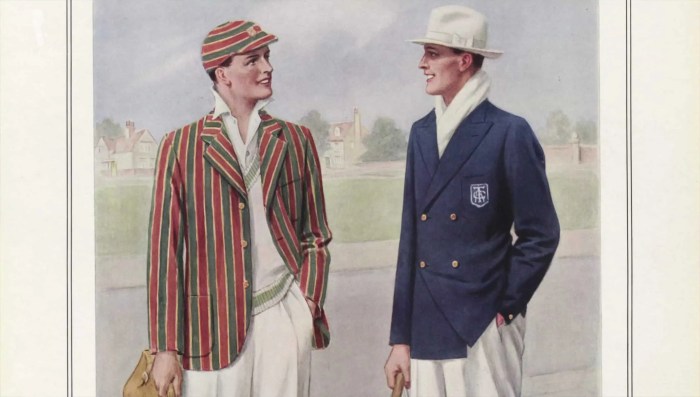1940s Mens Casual Fashion A Style Guide
1940s Men’s Casual Wear: 1940s Men’s Casual Fashion

Source: behance.net
1940s men’s casual fashion – The 1940s presented a unique landscape for men’s fashion, significantly shaped by the Second World War. While formal attire remained important for specific occasions, casual wear evolved into a distinct style reflecting both practicality and a subtle rebellion against wartime austerity. This exploration delves into the defining characteristics, key garments, and the impact of the war on the casual wardrobe of the average American male.
Defining 1940s Men’s Casual Wear
1940s casual menswear prioritized comfort and functionality, often utilizing readily available materials due to wartime rationing. The aesthetic leaned towards a relaxed, yet neat appearance, a departure from the more structured and elaborate styles of previous decades. Key distinctions from formal attire included the use of softer fabrics, less structured silhouettes, and a more subdued color palette, though vibrant colors were not entirely absent.
Socioeconomic differences influenced casual style; working-class men favored durable, practical workwear, while those with more disposable income could afford more varied fabrics and styles.
| Garment | Material | Common Colors | Notable Features |
|---|---|---|---|
| Work Shirts | Cotton denim, chambray | Indigo, khaki, brown | Durable, often with breast pockets |
| Button-Down Shirts | Cotton broadcloth, poplin | White, light blue, pastel shades | Neat, collar attached to shirt |
| Chinos | Cotton twill | Khaki, olive, beige | Durable, comfortable trousers |
| Corduroy Trousers | Cotton corduroy | Brown, olive, navy | Warm, textured fabric |
Key Garments and Accessories
The core components of 1940s casual menswear were versatile and practical. Shirts, trousers, sweaters, and footwear were chosen for their durability and comfort, reflecting the era’s emphasis on functionality.
Work shirts, often made from durable cotton denim or chambray, were staples for working-class men. Button-down shirts, crafted from softer cotton broadcloth or poplin, offered a more refined casual option. Trousers included chinos, known for their practicality and comfort, and corduroy trousers, which provided warmth and texture. Sweaters and cardigans, often knitted from wool or cotton, added layers of warmth and style.
Footwear choices frequently included sturdy leather oxfords, loafers, or work boots, reflecting both practical needs and personal style.
- Hats: Fedora hats, newsboy caps, and baseball caps were common accessories.
- Belts: Leather belts, often with simple buckles, were functional and stylish.
- Pocket Squares: Small, often patterned, squares added a touch of personality to the outfit.
Influence of Fabric and Color
Wartime restrictions significantly impacted fabric availability, leading to a more limited palette and the increased use of durable, readily available materials like cotton and wool. Popular color palettes tended towards earth tones like khaki, olive, brown, and navy, reflecting both practicality and a sense of restraint. Workwear favored darker, more durable colors for practicality, while leisurewear sometimes incorporated lighter, more vibrant shades.
The muted palette reflected the seriousness of the times, yet subtle pops of color in shirts or accessories could indicate a personal touch of style.
Impact of World War II
World War II dramatically altered the landscape of men’s casual fashion. Rationing and material shortages forced designers and consumers to prioritize practicality and durability. The war also led to a surge in military-inspired styles, with elements like utility pockets and simpler silhouettes finding their way into civilian clothing. This created a blend of practical necessity and subtly adapted military aesthetics.
| Garment Type | Pre-War Materials | Wartime Materials | Style Differences |
|---|---|---|---|
| Shirts | Fine cotton, silk | Cotton twill, chambray | Simpler designs, fewer embellishments |
| Trousers | Wool, linen | Cotton twill, corduroy | More utilitarian styles, fewer pleats |
| Sweaters | Fine wool, cashmere | Wool, cotton blends | Simpler knit patterns, less ornamentation |
Illustrative Examples, 1940s men’s casual fashion

Source: gentlemansgazette.com
A typical 1940s working-class casual outfit might consist of sturdy cotton denim work pants, a chambray work shirt, a wool cardigan, and leather work boots. A newsboy cap and a simple leather belt would complete the look. For leisure, a man might opt for cotton chinos, a button-down shirt in a light pastel shade, a knitted sweater, and leather loafers.
A fedora hat could add a touch of sophistication.
Comparing a 1940s casual outfit to a modern interpretation reveals a shift towards more streamlined silhouettes and a wider range of fabrics and colors in contemporary styles. While the modern version might retain elements like chinos and a button-down shirt, it would likely feature a more diverse color palette and less emphasis on utilitarian details.
Essential FAQs
What were some popular leisure activities that influenced 1940s casual wear?
1940s men’s casual fashion often featured relaxed silhouettes and comfortable fabrics, reflecting a shift away from the formality of previous decades. This laid-back approach, prioritizing practicality and ease, paved the way for future styles, influencing even contemporary trends like those seen in miami mens fashion , which often incorporates a similar emphasis on comfortable yet stylish pieces. The enduring appeal of simple, well-made clothing, a hallmark of the 1940s, continues to resonate today.
Popular leisure activities like bowling, baseball, and fishing influenced the casual wear of the time, leading to more relaxed and comfortable styles suitable for these activities.
How did the availability of denim change during the 1940s?
Denim, while always a staple, became more scarce due to wartime fabric rationing, leading to more creative use of existing denim garments and a rise in alternative fabrics for similar styles.
Were there any notable fashion icons of 1940s casual style?
While specific “icons” are less documented than in later eras, the everyday working man and the serviceman returning home both greatly influenced the look and feel of casual 1940s style.





















